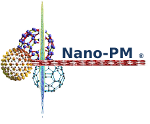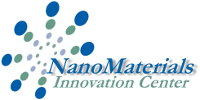Dr. Christie M. Sayes
Program Manager - Nanotoxicology & Nanopharmacology
Center for Aerosols & Nanomaterials Engineering
RTI International
 Dr. Christie M. Sayes is the Program Manager for Nanotoxicology & Nanopharmacology in the Center for Aerosols and Nanomaterials Engineering at RTI International. She was formerly a professor of toxicology at Texas A&M University. Dr. Sayes maintains her adjunct faculty appointment at Texas A&M in the Department of Biomedical Engineering and the Interdisciplinary Program in Toxicology. She has more than a decade of experience in the fields of nanotechnology and nanotoxicology. She has authored numerous publications, including original research, invited reviews and book chapters. She is a member of the Society of Toxicology, the American Chemical Society, and the Society of Environmental Toxicology and Chemistry. She serves on the Scientific Advisory Board for the EPA’s FIFRA Program and on the Editorial Board of the journals Nanotoxicology and Toxicology Letters. Recently, she was elected onto the Executive Committee of the North Carolina Chapter Society of Toxicology. Dr. Sayes has proven abilities in providing technical guidance and leadership to students, technicians, and colleagues; a high aptitude for development of complex particle toxicological and biocompatibility basic and applied research projects in cell culture based and animal based models; substantial training in nanomaterial & nanotoxicology research techniques & instruments; significant experience working independently & collaborating across disciplines and organizations; excellent communication and interpersonal skills with colleagues in science and engineering, senior management, and new and existing clients and other funding sources.
Dr. Christie M. Sayes is the Program Manager for Nanotoxicology & Nanopharmacology in the Center for Aerosols and Nanomaterials Engineering at RTI International. She was formerly a professor of toxicology at Texas A&M University. Dr. Sayes maintains her adjunct faculty appointment at Texas A&M in the Department of Biomedical Engineering and the Interdisciplinary Program in Toxicology. She has more than a decade of experience in the fields of nanotechnology and nanotoxicology. She has authored numerous publications, including original research, invited reviews and book chapters. She is a member of the Society of Toxicology, the American Chemical Society, and the Society of Environmental Toxicology and Chemistry. She serves on the Scientific Advisory Board for the EPA’s FIFRA Program and on the Editorial Board of the journals Nanotoxicology and Toxicology Letters. Recently, she was elected onto the Executive Committee of the North Carolina Chapter Society of Toxicology. Dr. Sayes has proven abilities in providing technical guidance and leadership to students, technicians, and colleagues; a high aptitude for development of complex particle toxicological and biocompatibility basic and applied research projects in cell culture based and animal based models; substantial training in nanomaterial & nanotoxicology research techniques & instruments; significant experience working independently & collaborating across disciplines and organizations; excellent communication and interpersonal skills with colleagues in science and engineering, senior management, and new and existing clients and other funding sources.
Recent projects focus on addressing questions involving the toxicity of engineered nanomaterials using both cell culture and whole animal models, the dosimetry (i.e. relevant dosing concentrations) of nanomaterial suspensions that are physiologically relevant, the adequate material characterization needed for form meaningful interpretations, and the development of predictive models (experimental and mathematical) using structure-activity relationships.














































